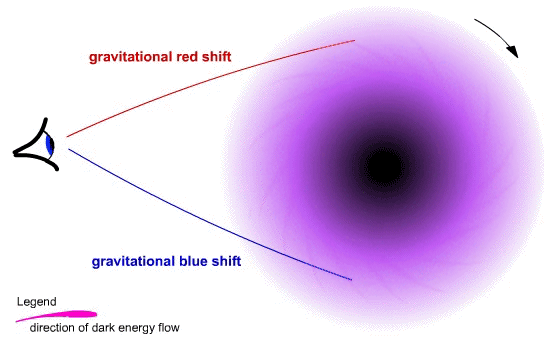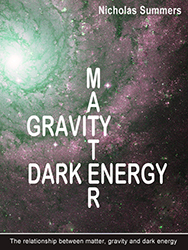
|
Thoughts on Black holesThis website uses the black hole extreme to illustrate how gravity is a state of energy in much the same way as matter and electromagnetic waves are other states. Thinking of a black hole as dense matter may be a mistake. A black hole is not going to be made of tightly packed atoms and I doubt that they will consist of tightly packed neutrons either. Matter, as we understand it, can't exist in this kind of environment. So what are we left with? The question arises "if matter doesn't exist in a black hole how could there be any gravity?". Mass is a property of matter - no matter no mass, no mass therefore no gravity. However, this is obviously not true as Black Holes are known to produce enormous gravitational fields. You would be far better off thinking of a Black Hole predominantly as a vacuum, and I mean a real vacuum, an energy vacuum, unlike the area between the stars we call space. A black hole exists at the centre of every galaxy and at the quantum level, a black hole exists at the centre of every sub atomic particle. The macro and the micro subscribe to the same mechanism which is high energy field sustaining a partial energy void, or the other way round, whichever way you care to look at it. The life cycle of a black holeI think we need to differentiate between spinning and non spinning black holes as their origins may not be the same. I feel comfortable with the idea of a dying star expanding then dragging back its offspring (in our case, us, Jupiter Uranus etc) to form an object massive enough to collapse to form what is known as a stellar black hole. The second type may not be from the death of a system but from the birth of a system. The galactic super massive black hole is probably born prior to a galaxy's overall creation. As a hydrogen gas cloud shrinks under its own gravity a critical moment is reached when massive energy is released at the centre. Relatively speaking, this is equivalent to a mini Big Bang. The energy released has a domino effect, acting as a catalyst, and impinges on the surrounding gas which then spawns the other stars and they, in turn, form their own solar systems. In this arena, the birth of a galaxy, it is likely that the black hole is instantly created just after this mini Big Bang. The outward momentum of matter and energy, if you can call it that, leaves a void behind - that real vacuum I previously refered to. So what is the ultimate fate of a black hole?Well, the more matter and gravitational energy that the black hole absorbs, ironically, the weaker it becomes. Eventually, the internal void will dissipate, the surrounding high energy field returns to its base state in equilibrium with the energy levels of the surrounding universe and no more black hole. It dissolves. so to recap
Frame dragging with spinning Black Holes
The image above shows a spinning black hole. The high gravity and relatively small radius allows for a very high spin rate. The direction of the flow of aether into the black hole means that something falling towards the black hole will fall obliquely and not towards the centre. Frame dragging around spinning black holes affects the frequency of electromagnetic radiation. As shown in the diagram, light or any other wave type emission passing or issuing from one side of object will show differing wavelengths from the other side depending on the rate of spin. Creation of interstellar hydrogenIt either comes from the collision of two or more aether energy fields or more commonly something that causes a turbulence in an existing dark energy field. An electromagnetic wave provided with enough energy will reach an energy saturation level. It will lose its sinusoidal wave like resonance and cause the dark energy to break into particulate matter. What is 'dark matter'?'Dark matter' is a term used to try and explain the anomalies that can be observed in the predicted trajectories of stars and the behaviour of the observed universe as a whole. It has been concluded, by some, that the distortions must be caused by space containing significantly more matter than first thought. A possible explanation is the existence of stellar black holes widely dispersed throughout galaxies. Dark energy in accelerated motion, and that includes circular motion, distorts Kepler's vision and what we perceive to be a straight line . ---------------------------
|

